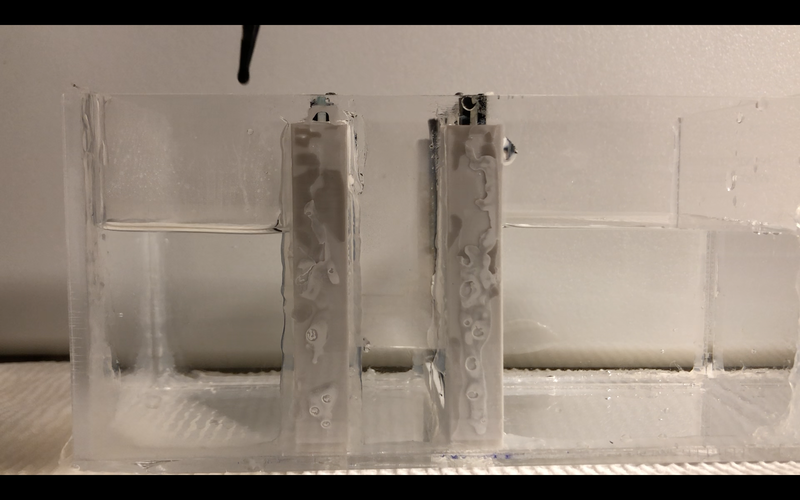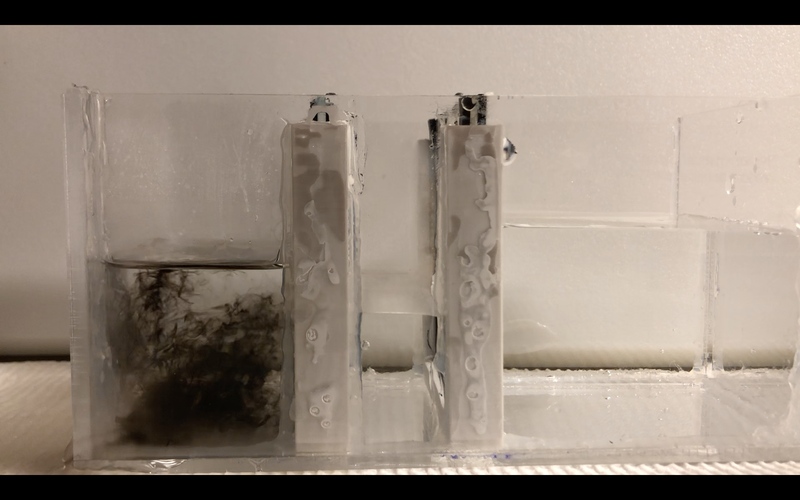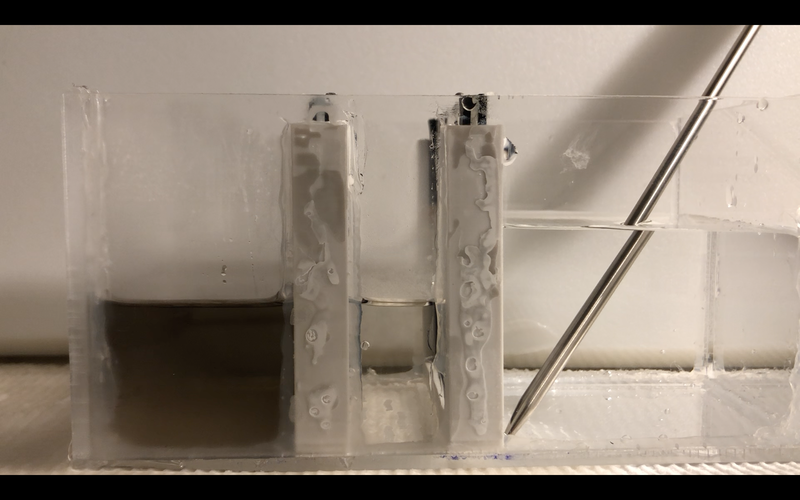Methodology
Controlled Conditions: The controlled conditions of our experiment were maintaining the three water temperatures placed in the three chambers, including boiling water, room temperature water and cold water. These initial temperatures were maintained to keep the tests consistent and accurately measure the resulting water temperatures. Other controlled conditions in the experiment include the environment in which the chambers were kept and tested, as well as the amount of ink placed in each chamber.
Preconditioning of Test Samples: Our test samples included various samples of water that were required to be kept at certain temperatures for each test, including boiling water, room temperature water and cold water. The preparation of each water sample was performed for each test.
Experiment Process:
Preconditioning of Test Samples: Our test samples included various samples of water that were required to be kept at certain temperatures for each test, including boiling water, room temperature water and cold water. The preparation of each water sample was performed for each test.
Experiment Process:
- Set up camera to record video of experiment
- Place tank in an outdoor environment and set against a white backdrop
- Set up Arduino and Temperature Sensor to record temperature of the right chamber of the tank
- Heat a large amount water to boiling; Prepare room temperature water and cold water in separate containers
- Record the temperature of each water sample
- Begin video recording
- Fill each chamber of the tank with the correct water sample (Left - Boiling, Cavity - Room Temp., Right - Cold)
- Drop black ink (5-6 drops) into corresponding chamber
- Drop ink in the central cavity for the two solid sheet test; Drop ink in the left side for the perforated test
- Observe the ink dispersion in the central cavity for the two solid sheet test; Observe the ink movement through the perforated sheet for the perforated sheet test
- Record the resulting temperature change in the right chamber
- End video recording
Mock-Up Data & Results:
Test # |
Hot Water Temp. (Left) (F) |
Cold Water Temp. (Right) (F) |
Time Elapsed to Reach Thermal Comfort Temp. (Sec) |
Resulting Water Temp. (Right) (F) |
1 |
173 |
70.9 |
6 |
72.7 |
2 |
159 |
66.7 |
47 |
68.2 |
3 |
185.2 |
67.3 |
70 |
72 |
Final Testing Procedure:
Two Solid Sheets with Varied Cavity Depth - Ink Performance Within Cavity
2" Cavity Depth
|
|
|
4" Cavity Depth
|
|
|
6" Cavity Depth
|
|
|
Perforated and Solid Sheet with Varied Cavity Depth - Ink Movement into Cavity
2" Cavity Depth
|
|
|
4" Cavity Depth
|
|
|
6" Cavity Depth
|
|
|



